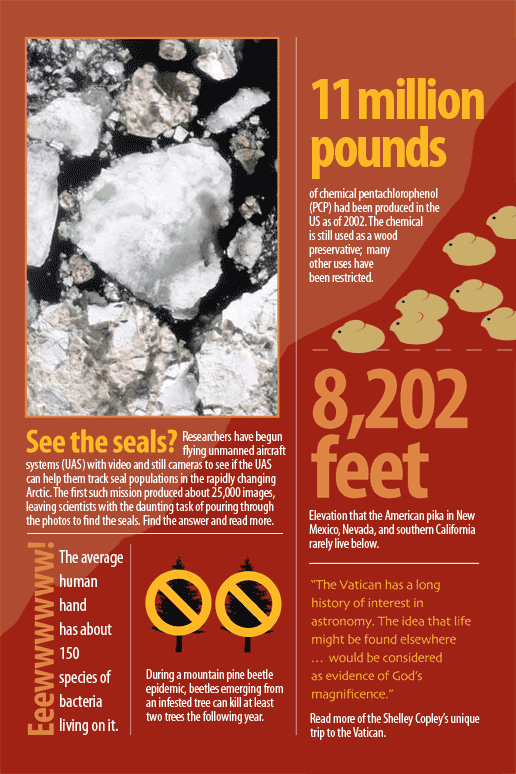
Don't count on the trees
Forests not likely to
counteract warming
Contrary to conventional belief, as the climate warms and growing seasons lengthen, subalpine forests will soak up less carbon dioxide (CO2) than they used to, according to research by CIRES Fellow and biology professor Russell Monson and his graduate student, Jia Hu.
As a result, more of the greenhouse gas will be left to concentrate in the atmosphere.
"Our findings contradict studies from other ecosystems that conclude longer growing seasons actually increase plant carbon uptake," said Jia Hu, a graduate student in the University of Colorado at Boulder’s Department of Ecology and Evolutionary Biology.
Working with Monson, Hu found that while smaller snowpacks tended to advance the onset of spring and extend the growing season, they also reduced the amount of water available to forests later in the summer and fall. The water-stressed trees were then less effective in converting CO2 into biomass. Summertime rains were unable to make up the difference. "Snow is much more effective than rain in delivering water to these forests," said Monson. "If a warmer climate brings more rain, this won’t offset the carbon uptake potential being lost due to declining snowpacks," he said.
Drier trees also are more susceptible to beetle infestations and wildfires, Monson said.
The researchers found that even as late into the season as September and October, 60 percent of the water in stems and needles collected from subalpine trees along Colorado’s Front Range could be traced back to spring snowmelt. They were able to distinguish between spring snow and summertime rain in plant matter by analyzing slight variations in the water molecule’s hydrogen and oxygen atoms.
The results suggest subalpine trees, such as lodgepole pine, subalpine fir, and Englemann spruce depend largely on snowmelt throughout the growing season. "As snowmelt in these high-elevation forests is predicted to decline, the rate of carbon uptake will likely follow suit," said Hu.
Subalpine forests currently make up an estimated 70 percent of the western United States’ carbon sink. Their geographic range includes much of the Rocky Mountains, Sierra Nevada, and high-elevation Pacific Northwest.![]()



